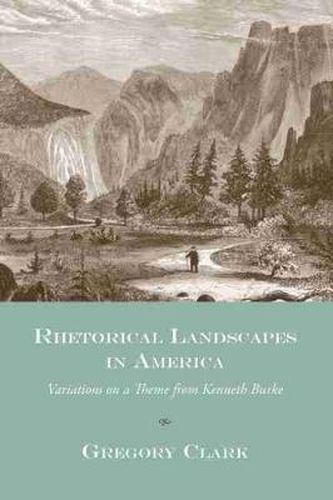Readings Newsletter
Become a Readings Member to make your shopping experience even easier.
Sign in or sign up for free!
You’re not far away from qualifying for FREE standard shipping within Australia
You’ve qualified for FREE standard shipping within Australia
The cart is loading…






At the same time a reading of Kenneth Burke and of tourist landscapes in America, Gregory Clark’s new study explores the rhetorical power connected with American tourism. Looking specifically at a time when citizens of the United States first took to rail and then highway to become sightseers in their own country, Clark traces the rhetorical function of a wide-ranging set of tourist experiences. He explores how the symbolic experiences Americans share as tourists have helped residents of a vast and diverse nation adopt a national identity. In doing so he suggests that the rhetorical power of a national culture is wielded not only by public discourse but also by public experiences. Clark examines places in the American landscape that have facilitated such experiences, including New York City, Shaker villages, Yellowstone National Park, the Lincoln Highway, San Francisco’s 1915 Panama-Pacific International Exposition, and the Grand Canyon. He examines the rhetorical power of these sites to transformprivate individuals into public citizens, and he evaluates a national culture that teaches Americans to experience certain places as potent symbols of national community. Invoking Burke’s concept of
identification
to explain such rhetorical encounters, Clark considers Burke’s lifelong study of symbols - linguistic and otherwise - and their place in the construction and transformation of individual identity. Clark turns to Burke’s work to expand our awareness of the rhetorical resources that lead individuals within a community to adopt a collective identity, and he considers the implications of nineteenth and twentieth-century tourism for both visual rhetoric and the rhetoric of display.
$9.00 standard shipping within Australia
FREE standard shipping within Australia for orders over $100.00
Express & International shipping calculated at checkout
At the same time a reading of Kenneth Burke and of tourist landscapes in America, Gregory Clark’s new study explores the rhetorical power connected with American tourism. Looking specifically at a time when citizens of the United States first took to rail and then highway to become sightseers in their own country, Clark traces the rhetorical function of a wide-ranging set of tourist experiences. He explores how the symbolic experiences Americans share as tourists have helped residents of a vast and diverse nation adopt a national identity. In doing so he suggests that the rhetorical power of a national culture is wielded not only by public discourse but also by public experiences. Clark examines places in the American landscape that have facilitated such experiences, including New York City, Shaker villages, Yellowstone National Park, the Lincoln Highway, San Francisco’s 1915 Panama-Pacific International Exposition, and the Grand Canyon. He examines the rhetorical power of these sites to transformprivate individuals into public citizens, and he evaluates a national culture that teaches Americans to experience certain places as potent symbols of national community. Invoking Burke’s concept of
identification
to explain such rhetorical encounters, Clark considers Burke’s lifelong study of symbols - linguistic and otherwise - and their place in the construction and transformation of individual identity. Clark turns to Burke’s work to expand our awareness of the rhetorical resources that lead individuals within a community to adopt a collective identity, and he considers the implications of nineteenth and twentieth-century tourism for both visual rhetoric and the rhetoric of display.